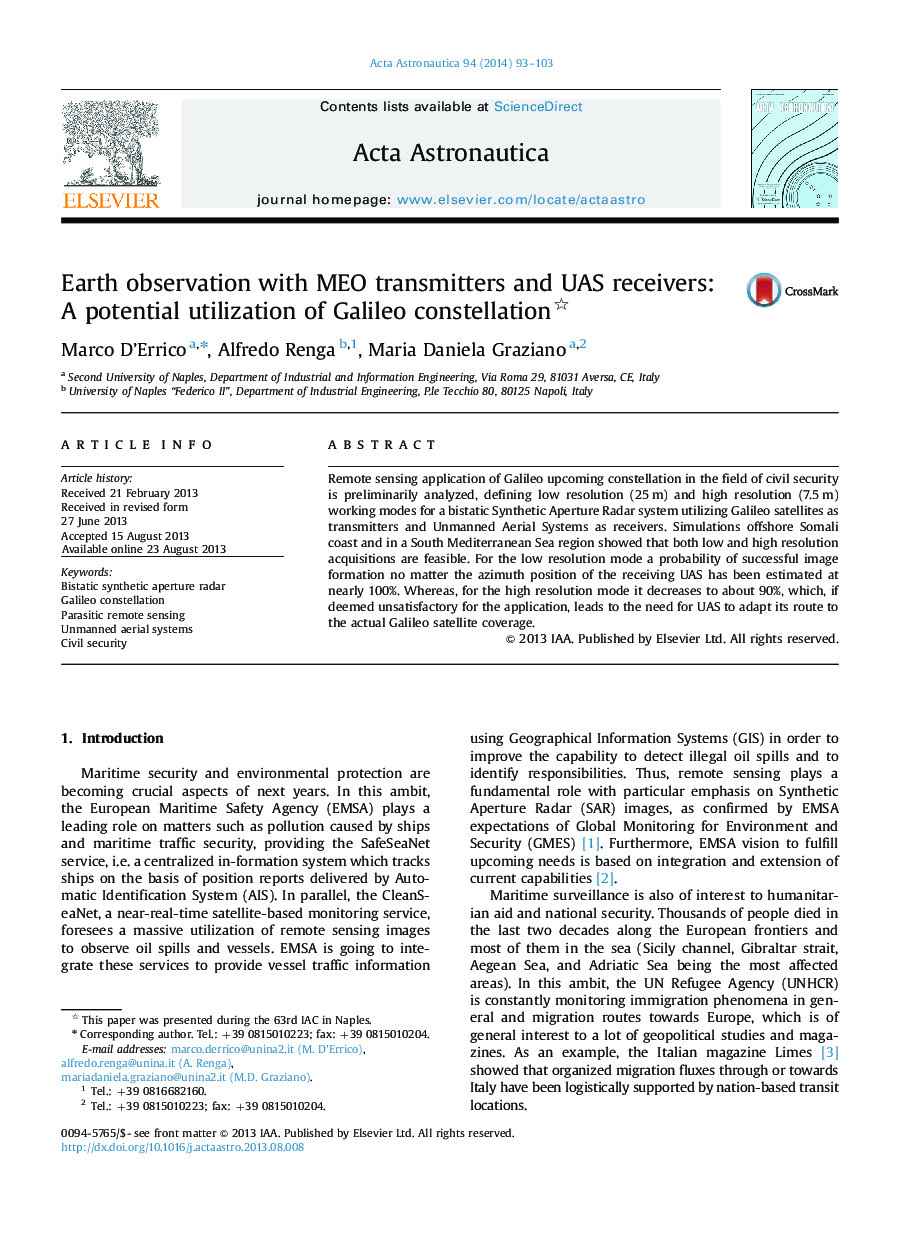| Article ID | Journal | Published Year | Pages | File Type |
|---|---|---|---|---|
| 10680821 | Acta Astronautica | 2014 | 11 Pages |
Abstract
Remote sensing application of Galileo upcoming constellation in the field of civil security is preliminarily analyzed, defining low resolution (25Â m) and high resolution (7.5Â m) working modes for a bistatic Synthetic Aperture Radar system utilizing Galileo satellites as transmitters and Unmanned Aerial Systems as receivers. Simulations offshore Somali coast and in a South Mediterranean Sea region showed that both low and high resolution acquisitions are feasible. For the low resolution mode a probability of successful image formation no matter the azimuth position of the receiving UAS has been estimated at nearly 100%. Whereas, for the high resolution mode it decreases to about 90%, which, if deemed unsatisfactory for the application, leads to the need for UAS to adapt its route to the actual Galileo satellite coverage.
Keywords
Related Topics
Physical Sciences and Engineering
Engineering
Aerospace Engineering
Authors
Marco D'Errico, Alfredo Renga, Maria Daniela Graziano,
